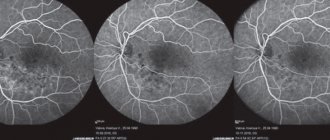Delirium tremens, or, in scientific medical terms, delirium tremens, occurs in a person suffering from chronic alcoholism most often, oddly enough, precisely in the period after the cessation of binge drinking. The risk of alcoholic delirium may persist for up to 15 days after alcohol withdrawal.
The specialists at the Preobrazhenie Clinic have extensive positive experience in treating delirium tremens and preventing it. In addition, we provide rehabilitation therapy for patients who have suffered this serious condition.
Call us we can help!
Content:
- Causes of delirium
- How delirium tremens manifests itself 2.1. First stage 2.2. Second stage 2.3. Third stage
- Consequences
- Treatment
Alcohol psychosis is one of the most common, severe and dangerous complications of advanced stages of alcoholism. Most often, narcologists deal with delirium tremens , which has an outdated but persistent name - delirium tremens. Despite the success of therapy, this delirious state worsens the quality of life of patients and is the cause of death. Relatives of alcoholics also suffer from it. At the first suspicion of the development of this pathology, the patient should be hospitalized immediately. Early treatment allows you to achieve better results and minimize time and financial costs.
How often does delirium tremens occur?
However, not all alcoholics are susceptible to delirium tremens, but only about 30% of people who chronically drink alcohol. Diseases of the nervous system such as encephalitis, stroke, meningitis or traumatic brain injury increase the incidence of delirium delirium. For older people, complications occur in more severe and serious forms. During the attack itself, the work of the cardiovascular system suffers first of all, which in alcoholics is not so great anyway. Therefore, a sharp increase in blood pressure characteristic of delirium tremens can lead to catastrophic results. In addition to blood vessels, the liver (alcoholic hepatitis) and intestines (constipation, diarrhea) are also affected. All this may be accompanied by bleeding from hemorrhoids, esophagus and stomach. Immunity is reduced, and severe pneumonia is likely to occur.
How long does it last
Delirium tremens can be observed in a patient either for a few minutes (abortive delirium) or for more than a week, but in this case there is a high probability of death due to prolonged pneumonia and prolonged disruption of the cardiovascular system. If a person manages to survive this terrible period, then, most likely, at the end of the syndrome, encephalopathy along with polyneuropathy will be provided to him. The only way out for salvation is a hospital stay for several months or years, which in the end, most likely, will end in a nursing home. However, the average alcoholic delirium, as a rule, lasts only three to five days.
Medical care for a patient with delirium tremens necessarily includes psychiatric procedures. In the hospital, a complex of vitamins, magnesium and potassium, drugs to normalize the activity of the heart and kidneys, to improve mental activity, restore the body's water balance, and give sleeping pills are administered intravenously or intramuscularly. Sometimes it happens that the patient himself “brings” himself to the hospital, turning to the police for urgent help, due to persecution by illusory “criminals”.
Causes of delirium
In the general structure of metal-alcohol psychoses, delirium tremens occupies from 70 to 90%. Its development is due to a significant increase in the content of catecholamines in the blood. Their excess occurs against the backdrop of heavy and prolonged drinking bouts. Cessation of alcoholism leads to the formation of withdrawal syndrome, in which, against the background of decompensation, disruptions of enzymatic, hormonal and neurotransmitter reactions appear. As a result, the content of catecholamines according to A.G. Hoffman grows by 48-114%. At the peak of delirium tremens, this figure reaches 359% above normal.
In addition to the main cause, the development of delirium is facilitated by:
- Any disease the patient has, especially advanced stages.
- Pathology resulting from chronic intoxication with ethanol products and their metabolites.
- Use of alcohol substitutes.
Symptoms of psychosis can appear not only in binge drinkers, but also in people whose alcoholism occurs against the background of a constant form of drunkenness that lasts for years.
Forms and classification
Due to the fact that every alcoholic “drinks differently,” the forms and manifestations of the disease can vary significantly. Symptomatic manifestations and the onset of one or another stage depend on parameters such as the patient’s age, the presence of other diseases, the frequency, quantity and type of alcoholic beverages he drinks.
- The most common type of alcoholic delirium is classic . It is characterized by the entire set of previously described symptoms. It is important to note that this form develops quite gradually, and before acute psychosis the patient can drink alcohol for a long period of time.
- The lucid form develops very quickly, almost suddenly, and there is no hallucinosis and symptoms of delirium, but acute hypochondriacal neurosis, insurmountable fear and somatic disorders expressed in impaired coordination are present.
- In the abortive form, delusions and hallucinations are observed, but they are not pronounced. But anxiety and depression are strongly manifested.
- The professional form demonstrates amnesia; the patient may forget events not only that happened recently, but also significant moments of the past. Motor stereotypy is also present - the patient is unable to perform complex actions. This form has similar symptoms to dementia.
- Mussitating is a certain kind of continuation of the professional form. In addition to problems with the perception of reality and the ability to perform normal activities, the patient develops serious diseases of the internal organs.
- Atypical - unlike professional, it has symptoms similar to schizophrenic disorder. There is vivid delirium, persecutory delusions, very acute hallucinations and somatic disorders. Amnesia may also occur.
Consequences
After normalization of the condition, patients retain residual neurological, asthenic and somatic symptoms for some time.
They reveal:
- Rhythmic tremor, especially of the hands with periodic amplitude shocks.
- Unpleasant smell of sweat.
- Skin hyperemia.
- Muscle hypotonia and atrophy.
- Hyperreflexia.
- Tachycardia and changes in blood pressure.
- Pain in the right hypochondrium, enlarged liver, yellowness of the sclera.
- Low-grade fever up to 37.5.
- Convulsive seizures.
Laboratory blood tests reveal an increase in ESR, leukocytosis with a shift to the left, bilirubinemia, and azotemia.
Symptoms of the disease
The general symptoms of alcoholic delirium are characterized by a large number of vivid illusions and hallucinations in the patient, as well as problems with orientation in time and space. Hallucinosis, as noted above, is quite unpleasant and sometimes frightening visions: the patient may see devils, snakes, spiders, monsters and other creatures that do not exist in reality. Illusions are geometric or color changes in visible objects, such as fancy designs and patterns arising from ordinary objects.
Hallucinations are divided into visual, auditory and tactile, most of which are visual hallucinosis. The patient sees small unpleasant animals or reptiles, as well as devils or little green men. It is this fact that determines the common phrases: “drink yourself to hell” or “green snake.” Sometimes large animals may appear to the patient, but also not of the most friendly appearance and attitude: wolves, angry dogs, bears.
As for the symptoms of auditory hallucinosis, most often it is the hum of voices heard from all sides. The voices in most cases are addressed to the patient himself, scolding and condemning him or ordering him to do something.
Kinesthetic hallucinations are characterized by absolutely real sensations. The patient may feel as if spiders are crawling on his body or there are foreign objects, such as threads or hair, in his mouth.
In this aspect, there is the concept of mixed complex hallucinosis, when illusions and hallucinations are combined at all levels.
The general condition is accompanied by severe neurosis and deep depression, as well as sudden mood swings: from unbridled anger to spontaneous euphoria. The patient may experience severe fear. Oppressive melancholy, in general, a feeling of total hopelessness. In this condition, cases of suicide are not uncommon, occurring against the background of unbearable melancholy or motor psychomotor activity. This means that in the process of fighting non-existent subjects, the patient may harm himself or jump out of the window.
Physiological symptoms
At the somatic level, delirium tremens is accompanied by the following symptoms: Tremor and fever, muscle spasms, high temperature and blood pressure, cyanosis or erythema of the skin, disorder or inflammation of the gastrointestinal tract, cirrhosis of the liver, blood dysfunction.
Female symptoms
By and large, women's symptoms are not much different from men's, and the main danger is that a person, no matter whether a man or a woman, is unable to distinguish reality from nonsense.
However, some differences based on gender do exist, including the severity of symptoms. For example, women are characterized by a state of depression that overtakes them even before the onset of psychosis. Sleep disorders, neurosis-like states, aggression, and other manifestations of negativism can also be observed in women not during delirium itself, but before its onset. In men, as a rule, there are no warning signs of delirium tremens.
Treatment
Even at the first sign of suspicion of the development of delirium tremens, an immediate medical examination is required. To do this, it is most convenient to call a narcologist. If the diagnosis is confirmed, emergency hospitalization will be required. Treatment at home is not practiced due to the possible risk of complications (for example, cerebral edema), which can lead to dire consequences.
Treatment of acute alcoholic psychosis includes:
- Infusion-drip detoxification. Through a cubital catheter with the help of droppers, all toxins in the patient’s body are neutralized and removed.
- To prevent cerebral edema, detox is supplemented with the introduction of magnesium sulfate, B vitamins, and diuretics.
- Prescribing psychotropic drugs that eliminate delusional and hallucinatory manifestations and agitation. Neuroleptics are used for this. Fears are additionally relieved by anxiolytics.
- Injections of analeptic compounds that prevent and eliminate problems of the cardiovascular and respiratory systems.
In the hospital, it is possible to use hemosorption, plasmapheresis, hyperbaric oxygenation and craniocerebral hypothermia. All these procedures significantly alleviate the condition of patients.
If signs of cerebral edema nevertheless appear, then immediately carry out:
- Forced diuresis to remove intercellular fluid.
- Corticosteroid therapy.
- Introduction of large doses of magnesium.
- Oxygen/xenon therapy.
- Craniocerebral hypothermia (brain cooling).
After stopping delirium tremens, it is recommended to undergo a course of alcoholism therapy , get coded and begin leading a sober life. In this case, a positive prognosis is guaranteed.
First aid
The disease tends to last from 3 to 7 days (in some cases longer). At the first occurrence of an open attack of delirium tremens, the patient must be given proper assistance. You should not immediately try to treat it; before doing so, it is necessary to remove the patient from an excited state.
First aid for an attack of delirium tremens consists of the following actions : the alcohol addict is put to bed, stopping all attempts to get up. If the clouding is severe, that is, the patient’s behavior is violent, and he poses a threat to himself and others, then it is worth resorting to tying up. It is necessary to urgently call a doctor. Trying to deal with a squirrel yourself without proper experience is extremely undesirable.
The further state of health is determined by the treatment of this clouding itself. The patient needs a lot of fluids and coolness. If it is not possible to put it under a cold shower, you can limit yourself to wiping it with a wet cloth. Sedatives (for example, piracetam, diphenhydramine) will be beneficial. In this condition, the patient must first of all be reassured.
Calm can also come through kind words. There is no need to quarrel with the squirrel's victim: this will definitely not help him. Treat him with understanding: everything he says or does happens unconsciously.
Literature:
- Delirium tremens: (Clinic and some issues of pathogenesis) / M. G. Gulyamov, I. R. Khasanov, V. F. Kolomiets; Ed. and with a preface. G. V. Morozova. – 2nd revision and additional ed. – Dushanbe: Irfon, 1982. – 175 p.
- Emergency diagnosis and methods of relieving alcoholic delirium, withdrawal syndrome and convulsive paroxysms: Method. recommendations / Kharkiv. Research Institute of Neurology and Psychiatry; [N. I. Protasevich and others]. – Kharkov: B. i., 1988. – 13 p.
- Alcoholic delirium and delirious-oneiric psychoses of complex structure / K.G. Danielyan. – Yerevan: Hayastan, 1977. – 132 p.
Is it possible to help the victim at home?
When delirium tremens occurs, a person may faint, hit their head and get a concussion, which can cause death. Also, during an attack, the victim may swallow his tongue or suffocate in his own foam, and a very rapid heartbeat can cause cardiac arrest.
Several possible problems are listed above, as you can see, they are all deadly and the mortality rate among victims is really high, so treatment at home is not recommended . Symptoms of delirium tremens may worsen if they are not controlled and adequate control measures are not taken. They must be repaid by a specialist with the help of medications, this is what can prevent exacerbation and fatal complications.
Very often a person cannot cope with his problem on his own, so he needs help and support.
If your loved one experiences withdrawal symptoms, call 911 immediately. The attack usually lasts less than a minute, so it will end before medical help arrives.
While you're waiting for help, keep a close eye on the victim to make sure they don't suffer further injuries, such as falls. Remove objects that the patient may perceive as threatening and dim bright lights. Most often, the victim cannot think clearly, so be prepared to answer questions from doctors, for example:
- When was the last time you drank?
- How much does a person usually drink?
- Since when has he or she been drinking?
- Have you had symptoms of delirium tremens before?
- Does the person have a mental or physical disorder?
- Has the victim taken drugs or medications?
Diagnosis and benefits of specialized care
If the symptoms are mild, it is not always obvious that delirium tremens is present. In the context of a desire to stop drinking, delirium tremens is best diagnosed by a doctor. The doctor will perform a toxicology test and determine how much alcohol is in the patient's blood or urine. If the addict is receiving treatment at a clinic, the doctor will perform toxicology screenings several times, as well as other tests to evaluate alcohol dependence and the severity of withdrawal symptoms.
Development of an attack
Severe insomnia occurs on the third or fourth night. It is accompanied by severe visual hallucinations. A person is completely immersed in a delusional state, begins to talk or argue with “voices,” fights monsters, drives away invisible squirrels, gnomes, mice, cockroaches, and escapes from murderers and pursuers.
A person quickly experiences attacks of manic jealousy, persecution mania, and overexcitation. He is drawn to exploits, while the instinct of self-preservation is almost completely suppressed. The psyche experiences a status of instability. Periods of excitement are replaced by a state of apathy, severe relaxation, aggression and fear alternate with bouts of obsessive causeless fun.
During the day, manifestations of delirium sometimes recede for a while, and the patient becomes quite calm, friendly, talks about what happened to him at night, and realizes that he is sick. But then, towards night, the attack returns.
Later, a feeling of anxiety and fear completely takes over the patient. It gets worse in the evening and at night. There are functional hallucinations in which the ticking of a clock is perceived as threatening words. The patient begins to develop a severe form of insomnia with almost continuous delusional hallucinations that haunt him. Moreover, they are increasingly taking on a threatening and scary character.
The patient perceives the environment, but it is terribly transformed in his consciousness. In a state of horror and panic, a person seeks salvation by jumping from a window, aggressively attacks loved ones or random people, mistaking them for creepy characters. Delirium develops especially quickly in a nervous or changing environment, for example, with a large number of people, in a closed room on a train.








